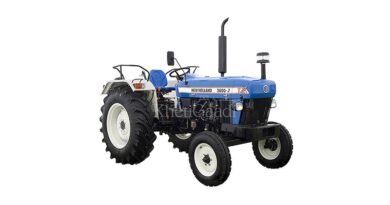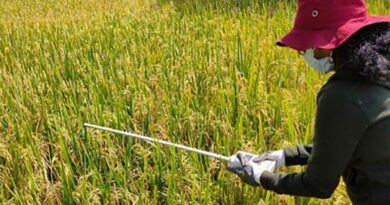Agriculture: New Energy-Efficient Technologies Set to Drive Sustainable Farming
19 June 2024, New Delhi: Energy Efficient Agricultural Technologies Market – Global Industry Analysis, Market Size, Share, Growth, Trends and Forecast 2014 – 2020
As agriculture remains a cornerstone of global economies, the escalating use of heavy machinery and equipment to enhance farming practices has driven a significant surge in energy consumption. This trend underscores the urgent need for energy efficiency programs in agriculture, aiming to mitigate energy consumption while promoting sustainable development. The integration of new energy-efficient technologies and innovative farming management practices is essential for reducing dependency on traditional energy sources, lowering costs, and supporting environmental goals.
Energy Efficiency in Agriculture: A Multifaceted Approach
Energy efficiency programs in agriculture are multifaceted, encompassing a range of strategies and technologies. These initiatives are designed not only to decrease energy usage but also to provide economic benefits to farmers and contribute to broader environmental objectives. Governments worldwide are experiencing substantial financial burdens due to subsidies provided for electricity and fossil fuels used in agriculture. Transitioning to energy-efficient technologies offers a viable solution to alleviate these financial strains and enhance sustainability.
By adopting energy-efficient practices, farmers can significantly reduce their electricity bills and contribute to reducing carbon emissions. Additionally, government rebates on the purchase of energy-efficient equipment can stimulate the market for these technologies, encouraging further adoption and innovation in the sector.
Market Segmentation and Technological Innovations
The market for energy-efficient agricultural technologies can be segmented based on technology types and geographical regions. Energy-efficient technologies are particularly beneficial for large agricultural farms, ranches, and rural small businesses, providing them with tools to enhance energy efficiency. Key technologies include:
- Energy-Efficient Farming Equipment: Modern machinery designed to operate with minimal energy consumption.
- Energy-Efficient Vehicles: Advanced vehicles that reduce fuel consumption through innovations such as proper tire inflation and frequent maintenance.
- Energy-Efficient Irrigation Pumps and Motors: Systems that optimize water use and energy consumption.
- Heating and Cooling Systems: Efficient climate control systems that maintain optimal conditions for crops and livestock with reduced energy use.
Geographical Insights: Leading and Emerging Markets
- North America: Dominating the market, North America benefits from robust government support, including technical assistance and free energy audits for farmers. These initiatives drive rural development and ensure food security, contributing to the widespread adoption of energy-efficient technologies.
- Asia-Pacific: With its developing market and vast agricultural economies like India and China, the region presents enormous potential for growth. The burgeoning demand and favorable investment climate make it an attractive market for companies manufacturing energy-efficient agricultural technologies.
- Europe: Driven by energy efficiency-favoring policies from the European Union, the European market benefits from rebates on purchasing energy-efficient farming equipment, fostering a supportive environment for technology adoption.
- Rest of the World (RoW): Including regions like the Middle East, Africa, and Latin America, the RoW segment sees significant demand from countries such as Argentina, South Africa, and Brazil. Despite the challenges of spreading awareness and implementing policies in remote areas, these regions hold substantial opportunities for market growth.
Drivers and Restraints
Several factors drive the energy-efficient agricultural technologies market:
- Rural Economic Development: Enhancing energy efficiency supports economic growth in rural areas by reducing operational costs and increasing profitability for farmers.
- Food and Energy Security: Ensuring a stable food supply and reducing energy dependency are critical national goals.
- Government Support: Rebates on energy-efficient equipment and technical assistance are crucial in encouraging farmers to adopt new technologies.
However, challenges persist, particularly in Asia-Pacific and RoW regions:
- Policy and Program Limitations: The lack of well-framed farming management programs and policies hinders market growth.
- Awareness and Accessibility: Many farms are in remote areas, complicating efforts to raise awareness about energy efficiency’s benefits.
Leading Players in the Market
Prominent companies in the energy-efficient technologies market include:
- Deere & Company
- New Holland Agriculture
- Baldor Electric Company
- Applied Industrial Technologies
- Hansen Motors
These industry leaders are at the forefront of developing and promoting innovative technologies that enhance energy efficiency in agriculture.
The adoption of energy-efficient technologies in agriculture is imperative for economic and environmental sustainability. By leveraging government support, technological innovations, and strategic market segmentation, the agriculture sector can achieve significant energy savings, reduce carbon emissions, and ensure long-term viability. As the market evolves, continued collaboration between governments, industry leaders, and farmers will be crucial in driving progress and achieving global sustainability goals.
These insights are based on a report on Energy Efficient Agricultural Technologies Market by TMR.
Also Read: Adoption of Agricultural Drones in India
(For Latest Agriculture News & Updates, follow Krishak Jagat on Google News)
(+80 Million Farming Audience Visits Krishak Jagat’s Hindi Website – Click Here for Website)















